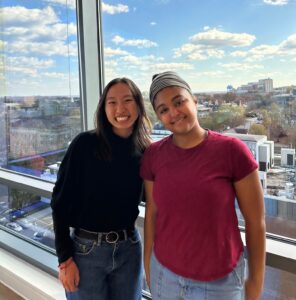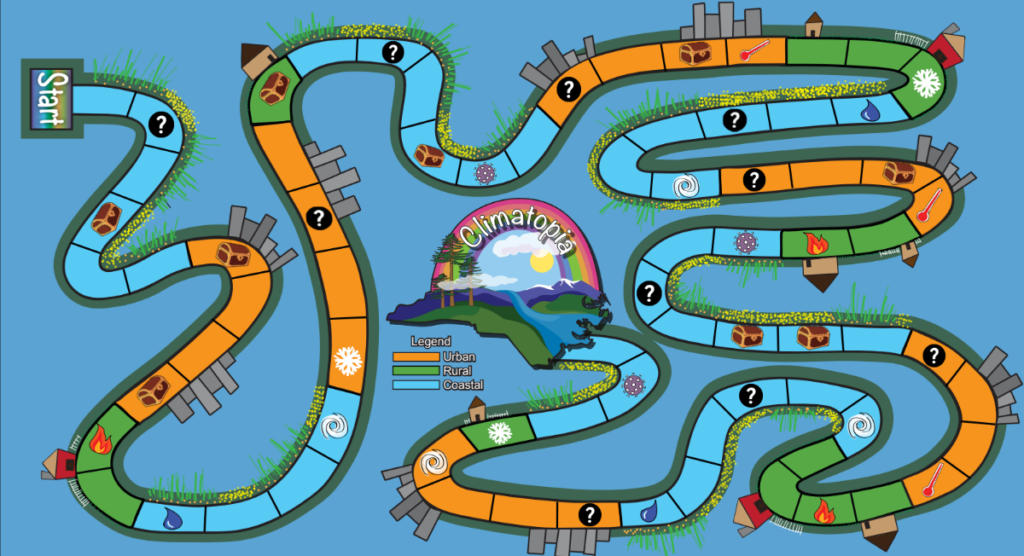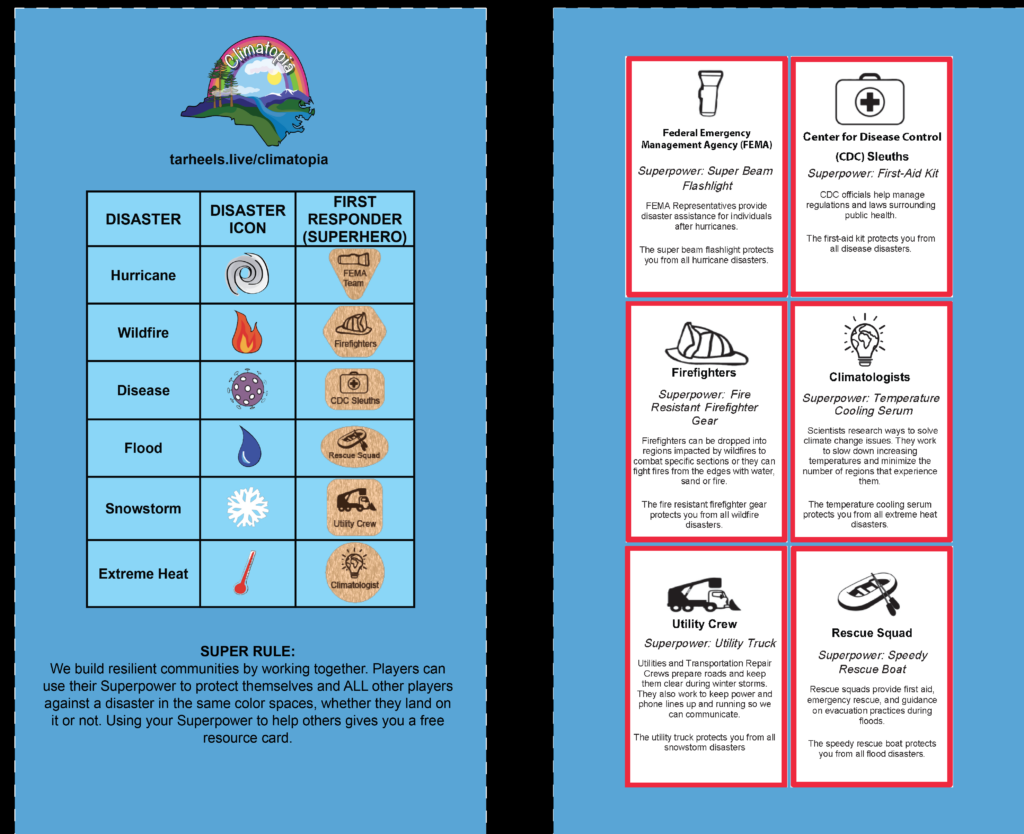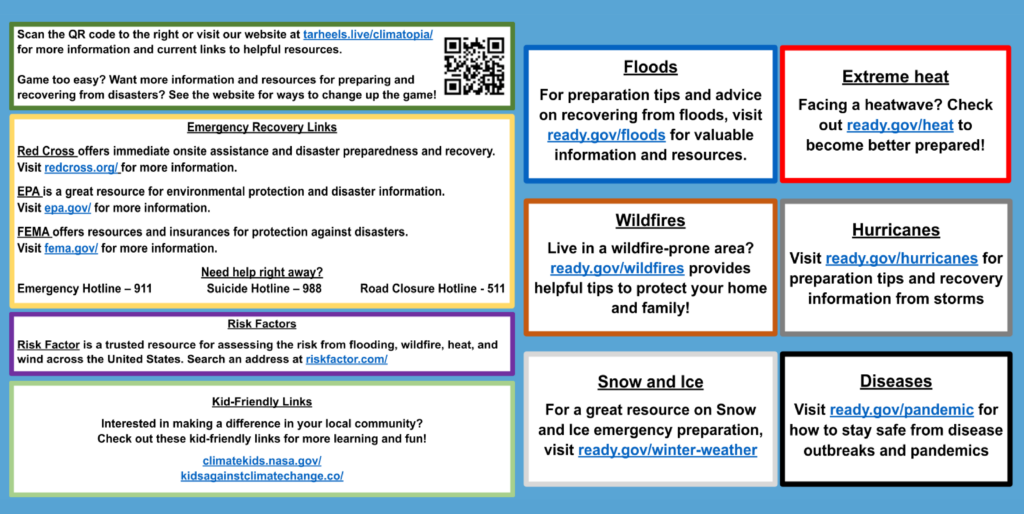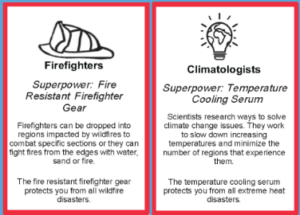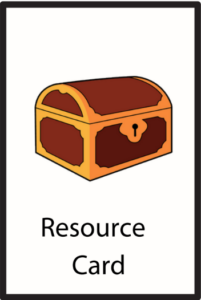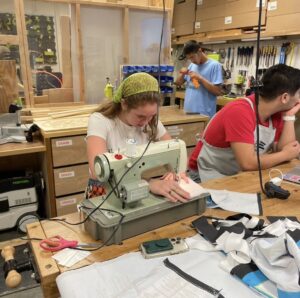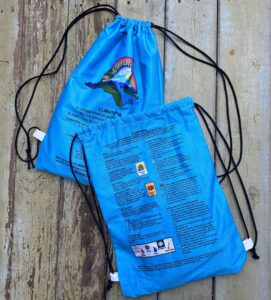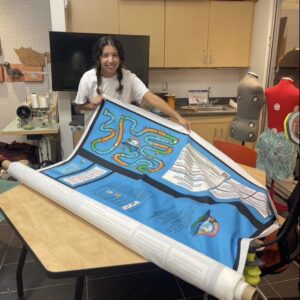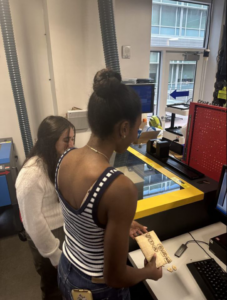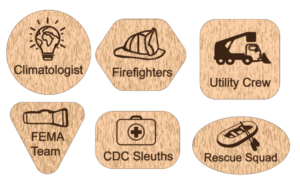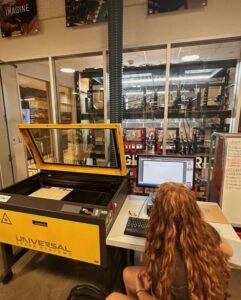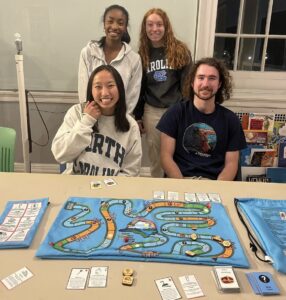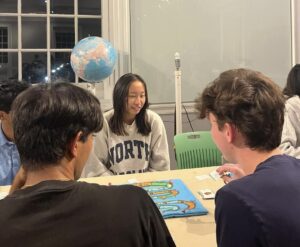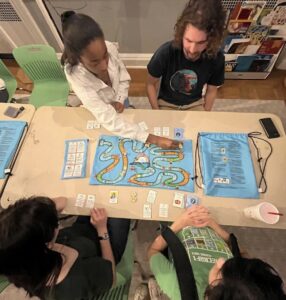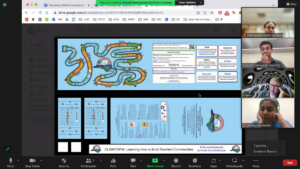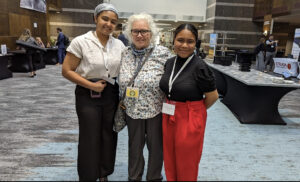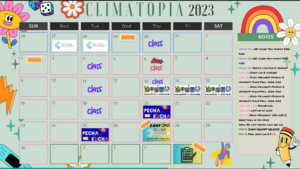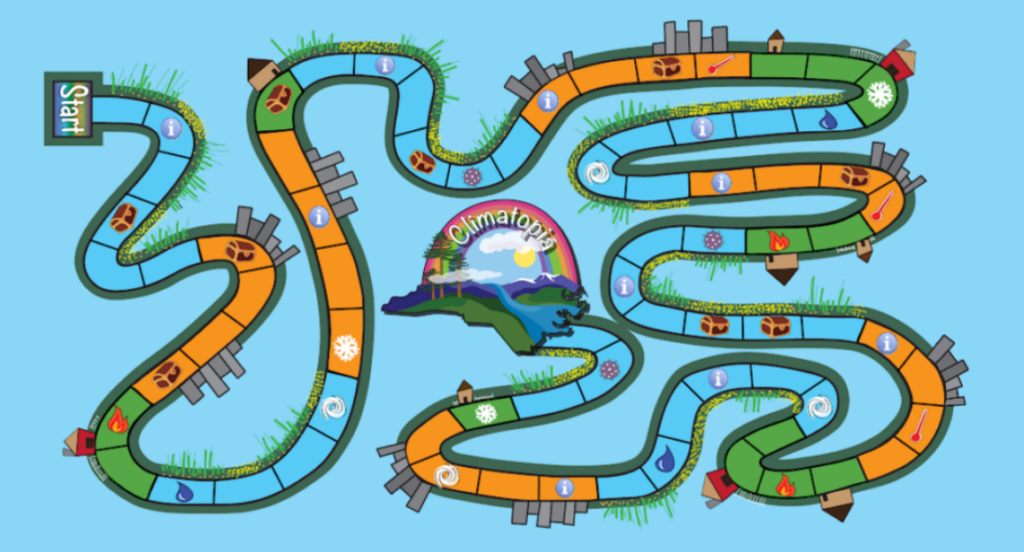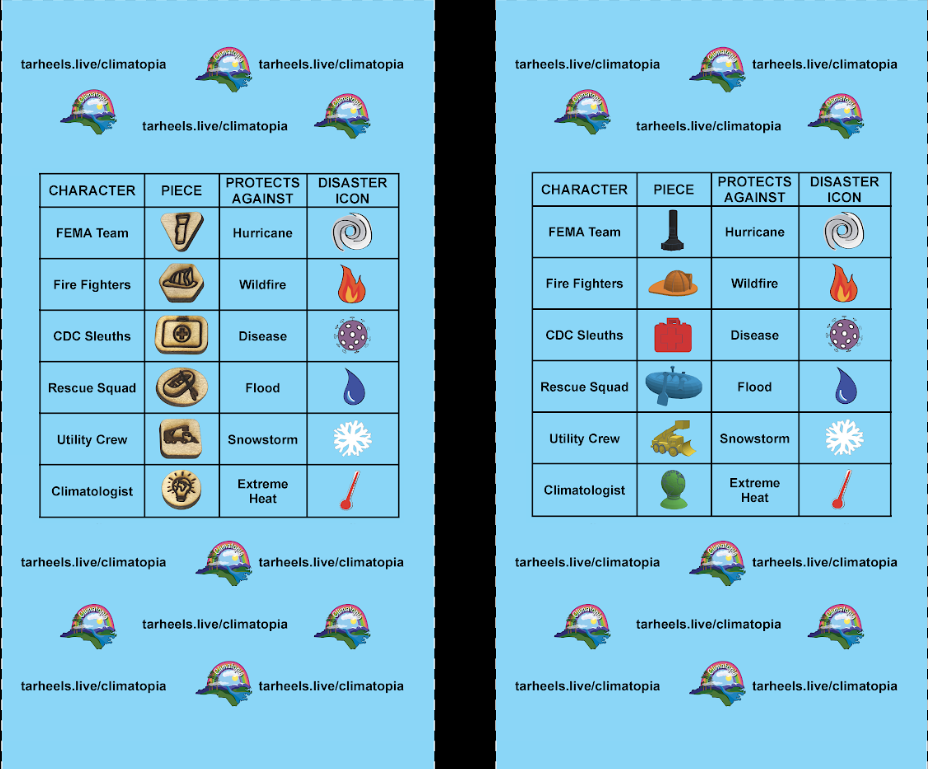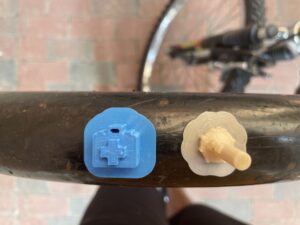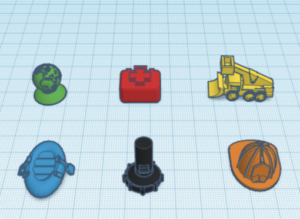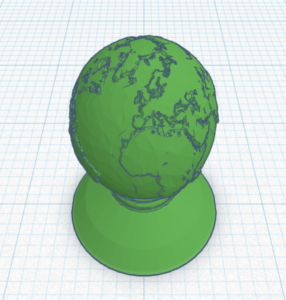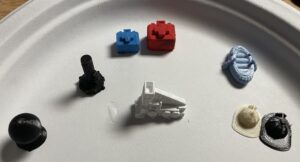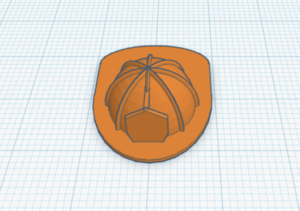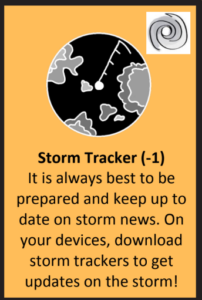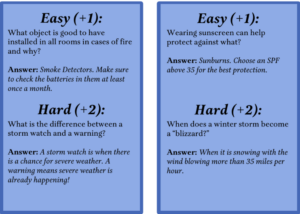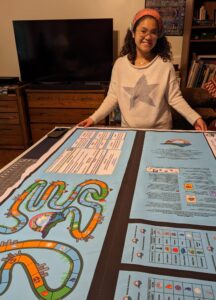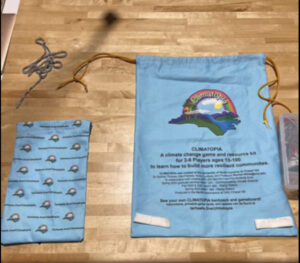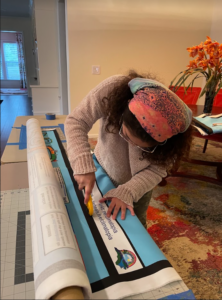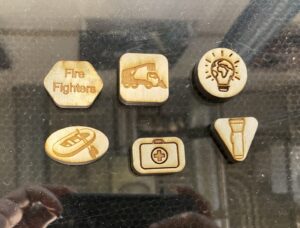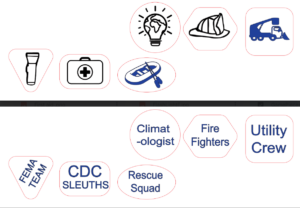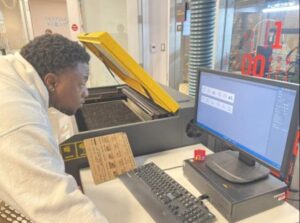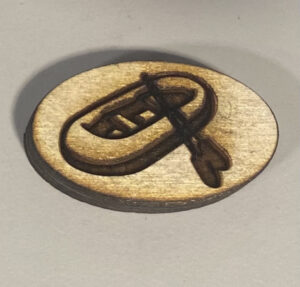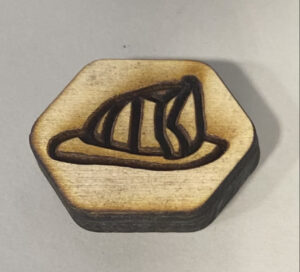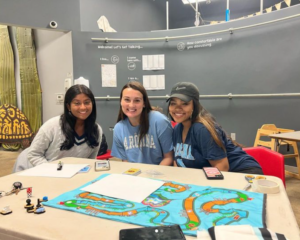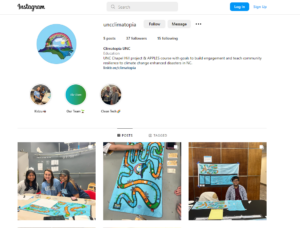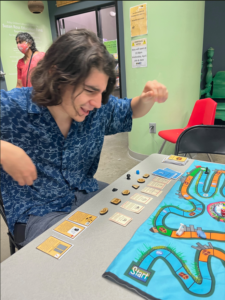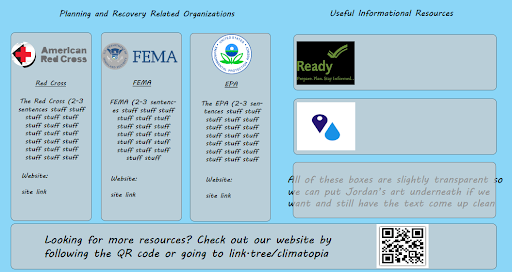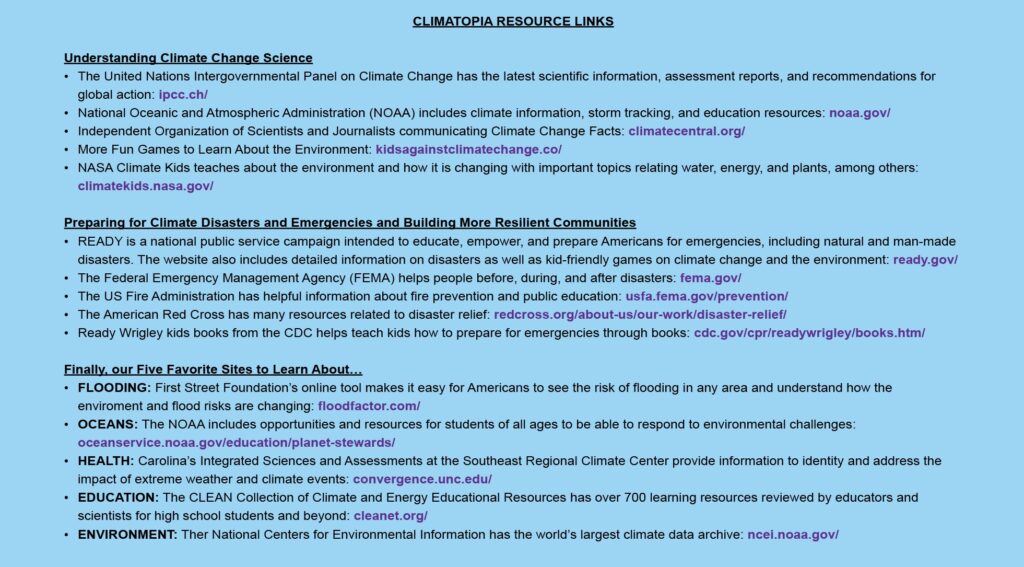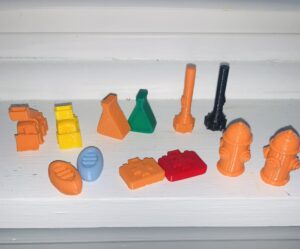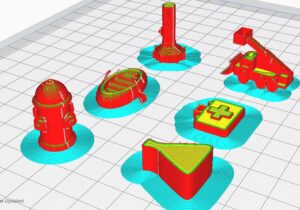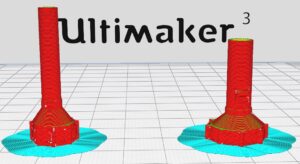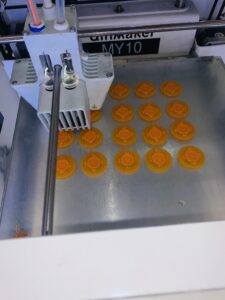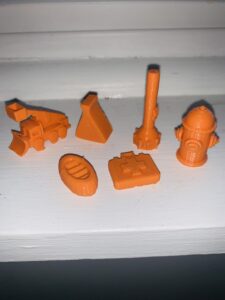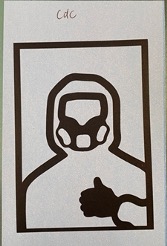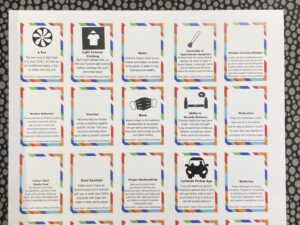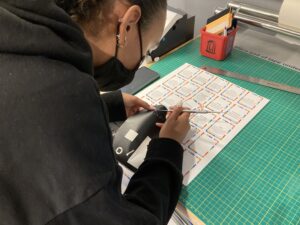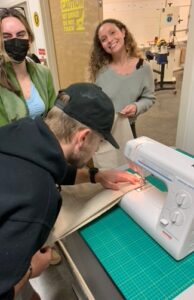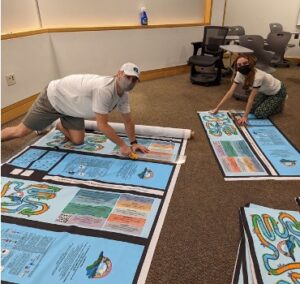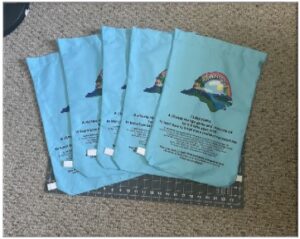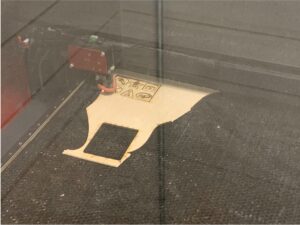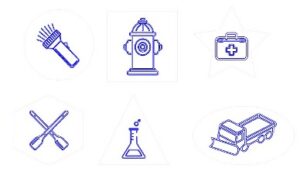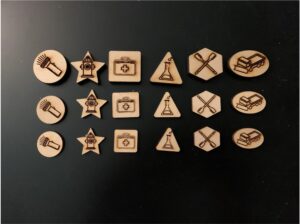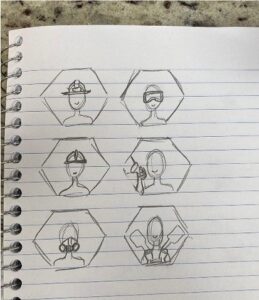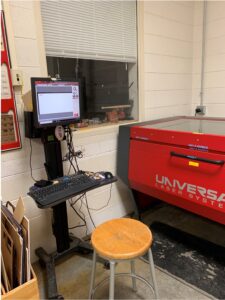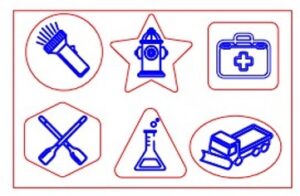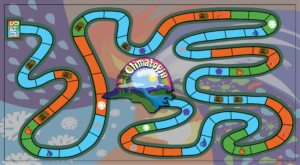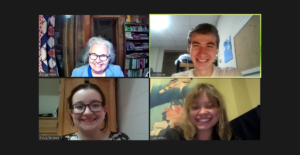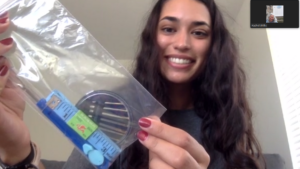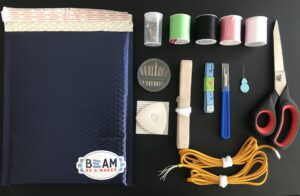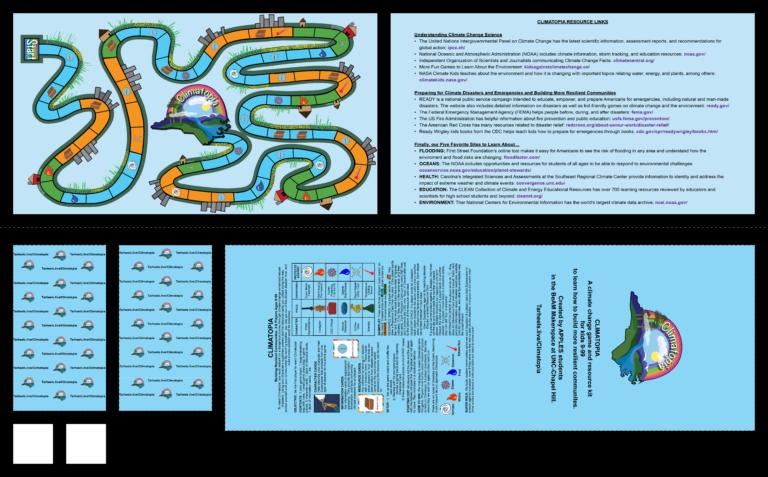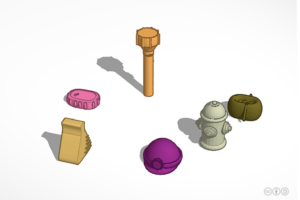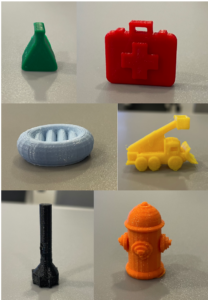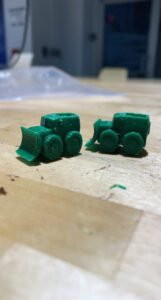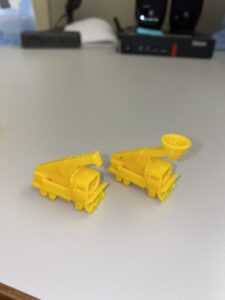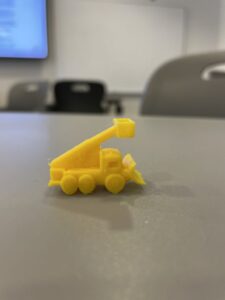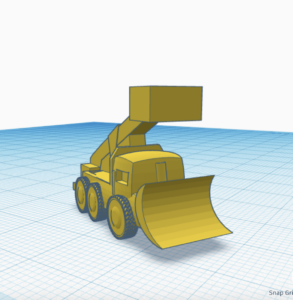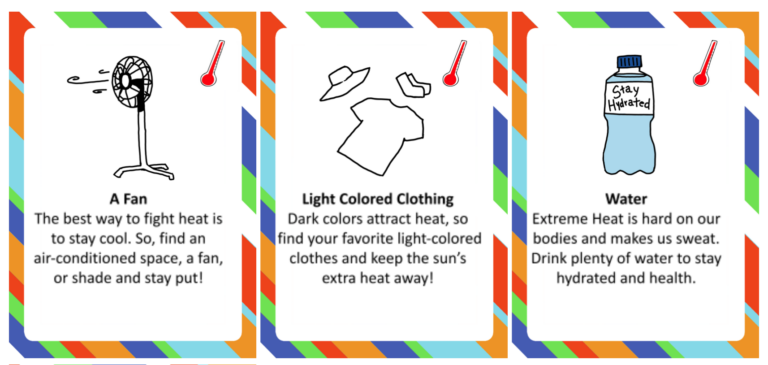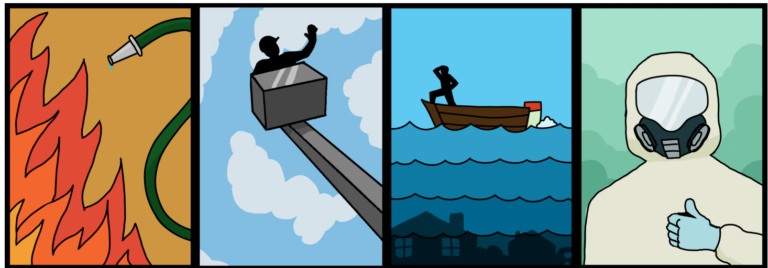Sydney Van Buren takes a deep breath as she slides a piece of fabric under her sewing machine. She taps the foot pedal, causing the machine to whir as she slowly guides the brightly colored cloth through the needle, carefully creating a straight seam of what will become a game board.
Van Buren isn’t a seamstress. The Carolina senior is the “chief operating officer” in American Studies 398: Service Learning in America, where she oversees her classmates in the production of “Climatopia,” a fabric-based board game that educates players about how to be more resilient in the face of climate change.
The focus of the semester-long course, taught by Rachel Willis, is to teach students how to effectively share climate change preparedness and coping strategies with communities that feel the impacts of these disasters. Willis has worked with six different cohorts over four years, and each one has improved the game as information on climate change has evolved.
Over the past 50 years, climate change and increasingly extreme weather events have caused a surge in natural disasters, according to reports from the World Meteorological Organization and the United Nations Office for Disaster Risk Reductions. As these hazards increase in frequency, the need for climate education is vital — and young people must develop strategies for adapting to and combating the effects.
“The scientific way that we have presented this information for the past 40 years is too difficult for most people to access,” Willis says. “The goal of Climatopia is to share the most effective and direct strategies for preparing for these disasters in a way that is easily accessible to children and their families.”
Working together
During the game, players race along a path through urban, coastal, and rural zones to be the first to reach Climatopia, a utopia where they are protected from climate change-enhanced disasters.
Each player is represented by a unique game piece with a specific superpower corresponding to nonprofit organizations or government agencies providing aid in real-life climate disasters. Sharing superpowers is baked into the game to mimic how recovery resources are shared in the real world, such as utility crews from one state assisting those in another during a disaster.
“The game is teaching the real strategies we’re using to recover from climate change-enhanced disasters,” Willis says.
The structure of this course is unconventional. Unlike other classes where students work independently, Willis’s students worked as a team to build the game.
“If we want to change a game rule or the design, we need to come in and vote as a class,” Van Buren explains.
To produce the game, the students formed seven committees. Some worked on the overall design, while others focused on community outreach and website creation. Students who made the physical pieces needed to play the game used UNC’s BeAM makerspace in Murray Hall.
All committees reported to the game’s leadership committee, led by Van Buren.
“Climatopia is a heavily collaborative project,” Van Buren says. “If we’re not communicating among people within different communities, nothing gets done.”
Building on the past
The idea for Climatopia came from a graduate seminar course Willis taught in Spring 2020, where students used the visual and performing arts to communicate about water challenges and climate change.
Willis invited two undergraduate students she had previously taught, Sydney Thomas and Alex Pistolis, to take the course and to develop a game. During this time, they collaborated on a new game targeted toward children that focused on climate change readiness.
In the fall of 2020, Willis invited them to be learning interns for a course totally focused on developing their game.
Around this time, Willis came across a 30-year-old polyester “go bag” produced by Duke Power and the Red Cross. The fabric bag was designed to store emergency supplies and the outside had emergency phone numbers and other helpful information printed on it. This sparked the idea to create the game board and its container out of cloth.
“I wanted to build a fabric game because it would be water-resilient,” Willis explains. “If the game gets wet, you could wring it out and dry it, and you’re back in business.”
Creating a game board out of fabric is also more environmentally friendly than using materials like plastic. Additionally, the bag doubles as a “go bag” during a disaster.
Willis shared her idea with Thomas, and together they created the initial prototype of Climatopia.
Each cohort has considered how the materials used to produce the game impact the environment. For example, early game pieces were made of 3D-printed plastic, but current ones are made from wood using a laser cutter.
During Fall 2023, Willis’ students focused on refining several details of the game, including aesthetic changes such as adjusting the background color of the gameboard to add more contrast and improving the design of the quiz cards. They also tested a prototype of the game using recycled fabric but found the cloth was not as durable as lightweight cotton twill — and more expensive.
“We’ve taken a good game board and made it better,” Van Buren says. “Now, we’ve reached a place where we think this will be the final iteration. And it’s not just the 15 people in my classroom. This is a culmination of 40, 50, 60 minds over the past four years.”
Along with improving the physical game, the students focused on developing the public’s awareness of the game by beefing up its social media presence and improving accessibility by sharing step-by-step instructions to create a DIY version at home with a one-yard purchase of custom Spoonflower fabric.
Additionally, students have successfully presented Climatopia at the NOAA RISE Carolina Integrated Sciences and Assessment conference and the UNC Cleantech Summit. The game has also won three MakerFest awards.
“I want the students to take away from this course true scientific climate change information in a way that enables them to act proactively to build and live in resilient communities,” Willis says. “And I want them to share that with others.”
